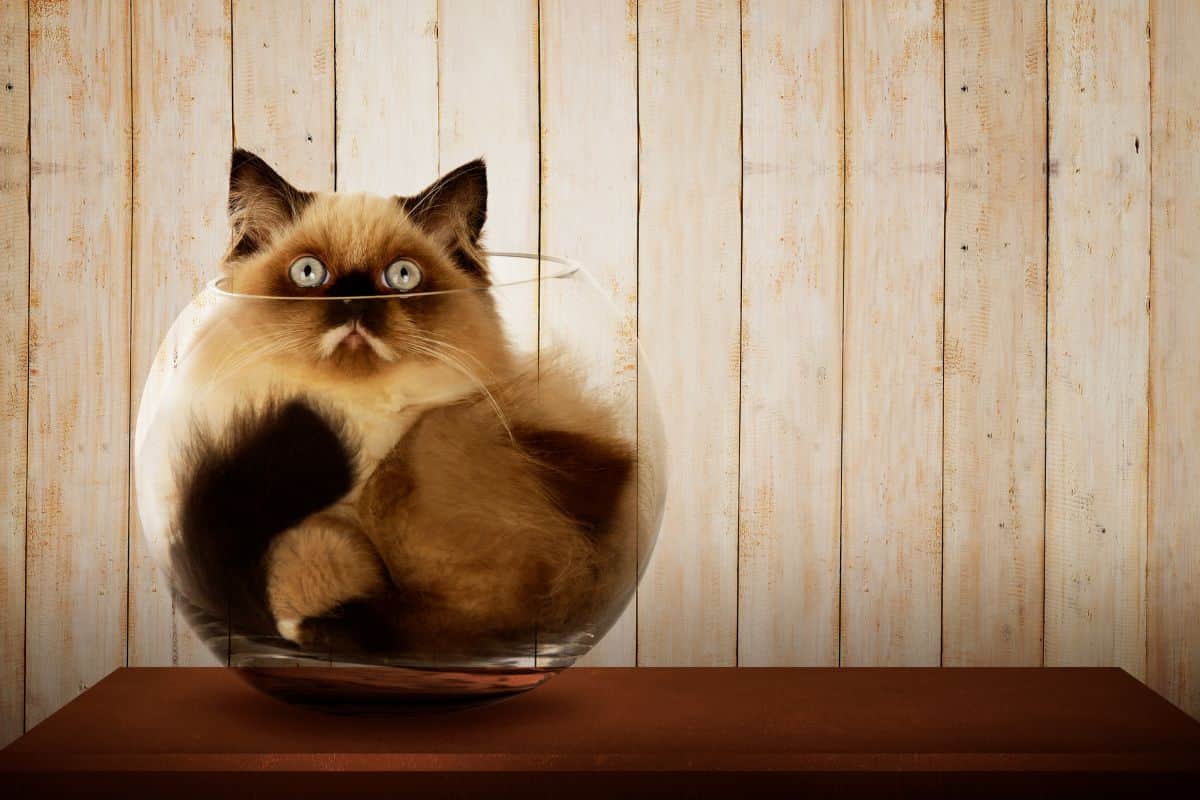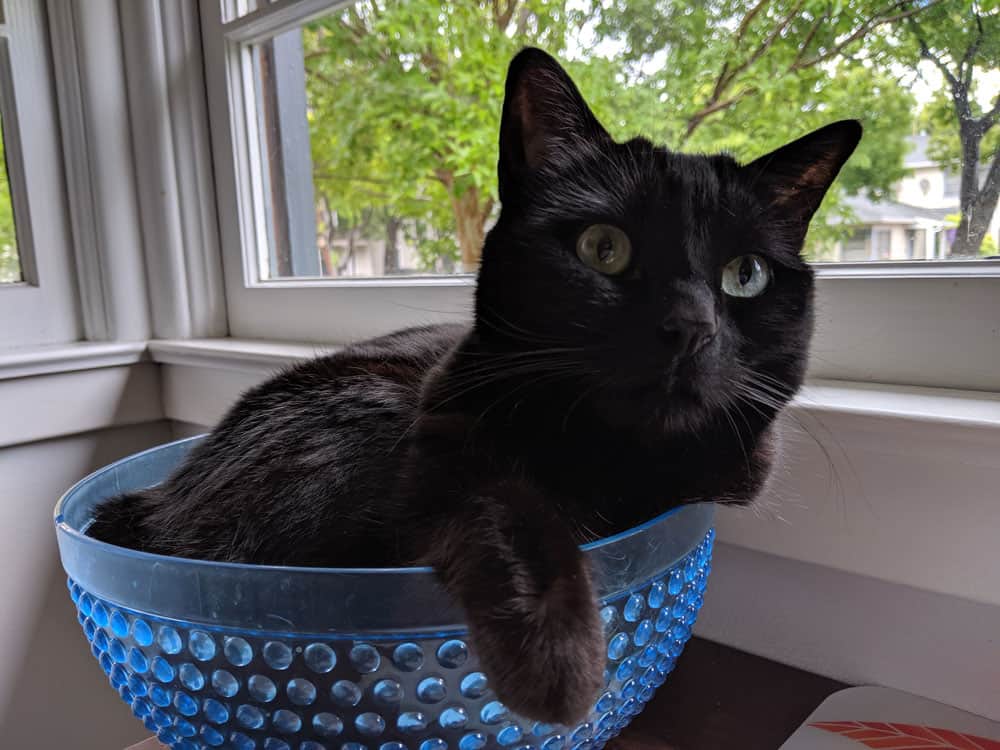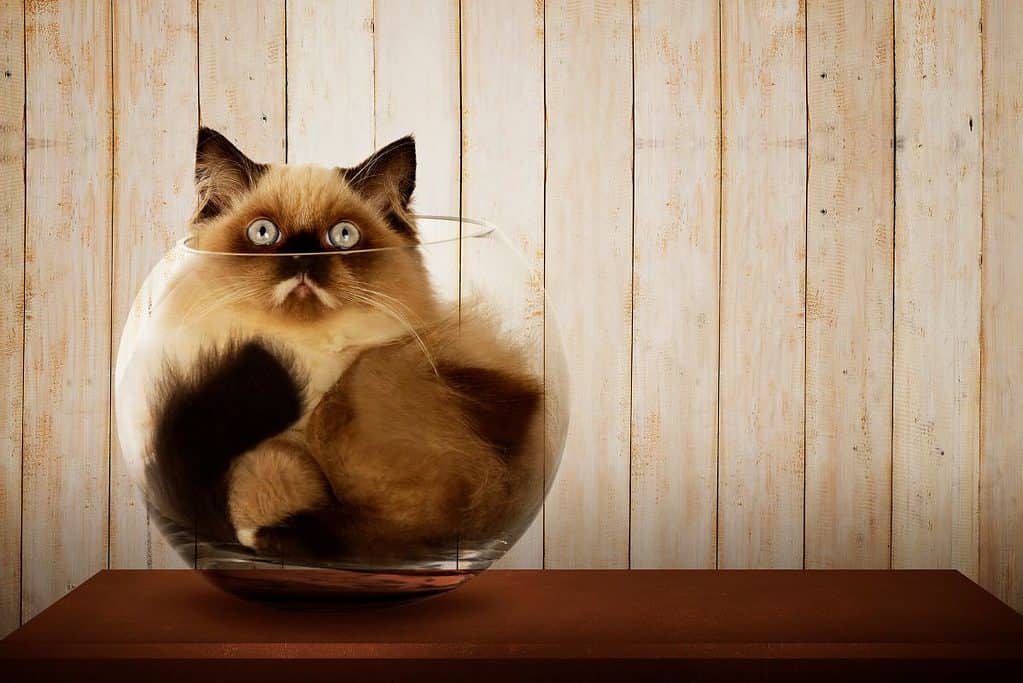Some people may consider cats to be “liquid” due to their ability to move and flow through small spaces and openings, similar to the way that a liquid will flow to take the shape of its container.
The internet is full of cats in interesting positions, contorting their bodies in seemingly impossible ways in order to fit through tiny holes, through narrow gaps, and inside tiny spaces.
While it is true that cats are able to adapt their body shape to fit into small spaces and openings, this does not make them liquid.
Cats are able to do this because they are flexible and able to contort and bend their bodies in various ways, but they still maintain a solid, physical form. Liquids are able to flow and take the shape of their container due to their lack of a fixed shape, but cats do not have this property.

Cats are not literally liquid and do not possess the physical properties of a liquid, such as the ability to flow or take the shape of their container.
What makes cats so flexible?
There are several factors that contribute to the flexibility and agility of cats.
One of the main reasons is the structure of their spine and musculoskeletal system. Cats have a flexible spine with a large number of vertebrae and a highly developed musculature that allows them to twist and bend their bodies in a variety of ways.
Cats also have a flexible pelvis, shoulder blades that are not attached to the skeleton, and retractable claws, all of which contribute to their ability to move and contort their bodies with ease.
Lastly, cats have a strong sense of balance and coordination, which helps them to maintain their balance while moving through tight spaces and making sudden movements.
Calling cats liquid may be a way of describing the seemingly effortless and graceful movement of cats, as well as their ability to contort and bend their bodies in unexpected ways.
Rheology of cats
Marc-Antoine Fardin, a researcher of rheology with Université Paris Cité, published a letter with the Bulletin of Rheology entitled, “On the rheology of cats.” Fardin noticed that cats tend to adapt to the shape of whatever container they are in, much like how liquids behave.

To answer the question, albeit tongue-in-cheek, Farin calculated the relaxation times of cats—the length of time it takes them to fill a small space such as a vase, box, or bathroom sink—using the concepts of rheology, the area of physics that studies the deformation and flow of matter.
What Fardin found is that cats can be considered “liquid” under the principles of rheology if given enough time to relax into the shape of the container they are in and where conditions are right. What Fardin notes as “low-affinity substrates”, like water, resulted in the failure of the cat to spread out into the space and made the cats act like a solid.
Fardin’s creative approach won him the 2017 Ig Nobel Prize in Physics which awards prizes for research that “makes people laugh, then think.”
References
Fardin, Marc-Antoine. “Answering the Question That Won Me The Ig Nobel prize: Are cats liquid?” The Conversation, 8 Nov. 2017, theconversation.com/answering-the-question-that-won-me-the-ig-nobel-prize-are-cats-liquid-86589.
Fardin, M. A. (2014). On the rheology of cats. Rheology Bulletin, 83(2), 16-17.







